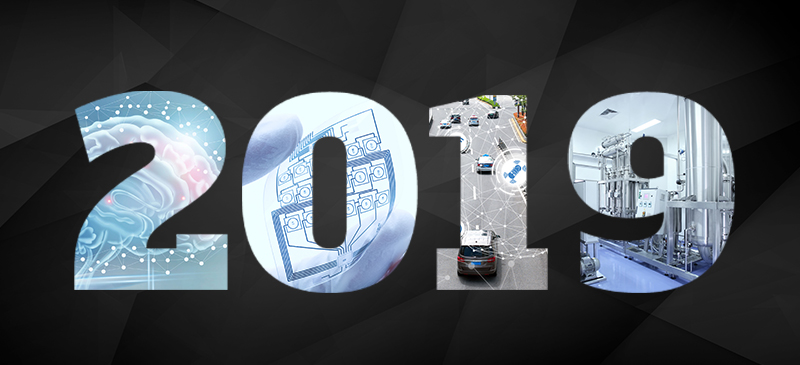
Looking Ahead: The Breakthroughs that will Shape High Precision Gas Delivery in 2019
In the rapidly evolving world of electronics manufacturing, 2018 marked a year of amazing breakthroughs on multiple fronts. Not only are innovators successfully developing and validating new materials and applications, but they’ve successfully innovated within the manufacturing environment itself—making it possible for electronics manufacturers to know and do more than ever before.
Let’s look at three critical areas where breakthroughs are transforming electronics manufacturing, and their resulting impact on high and ultra high purity gas delivery.
Material Breakthroughs
2018 brought a number of significant advances in material usage for electronics and other communication devices. For instance, researchers discovered that inorganic perovskites are a cost-effective, highly stable, and simple-to-manufacture alternative to current optical communication systems, and have applications in solar cell development as well because of their strong light-emitting properties. Headway has also been made in the printed electronics space, with chipmakers exploring how this technology can be commercialized across an array of sensor applications as a replacement for lithography. In order to support semiconductor production using innovative new materials like these, manufacturers will increasingly require ultra high purity gas delivery systems that are not only reliable, but also flexible enough to adapt to each material’s unique manufacturing demands.
Application Breakthroughs
In addition to the proliferation of novel materials, 2018 also brought a wave of new applications leveraging chip and sensor-based technologies. Applications like autonomous driving and machine learning are countering the projected “memory slowdown” with an uptick in memory diversification. According to a recent article in Semiconductor Engineering, applications like these have prompted an increase in funding for new chip start-ups. In fact, silicon wafer shipments are anticipated to reach 13,090 million square inches in 2019, up 5.2% from 2018. Application innovation offsets the cyclicality in fab equipment spending by demanding ultra high purity gas delivery systems that are tailored to application-specific needs.
Process Breakthroughs
Meanwhile, a wave of innovation has entered the fab itself, giving birth to more connected manufacturing processes that make it possible to share data on the fab floor. As Industry 4.0 continues to permeate manufacturing environments across sectors, the semiconductor fab is no exception. What does this mean for high and ultra high purity gas delivery systems? They must be Industry 4.0 and SCADA-ready, providing fabs the ability to operate in this new, connected reality through instantaneous insight that can be used to increase production uptime, and more proactively monitor and optimize production processes.
The Bright Future of High Purity Gas Delivery
From new material discoveries, to future-forward application innovations, to advancements in the manufacturing environment itself, one thing is clear: when it comes to technology, progress is swift and certain. As we enter 2019 with the early breakthroughs of this past year more mature and widespread, high and ultra high purity gas delivery will remain critical to manufacturers’ success.
The currents of change are sure to continue as technology advances in the coming year, but some things will remain the same—like AES’s ability to serve as the gas delivery system partner electronics manufacturers need to keep their businesses ahead today and tomorrow. Contact AES to learn how we can help you start off the New Year right.
Share this Post:

